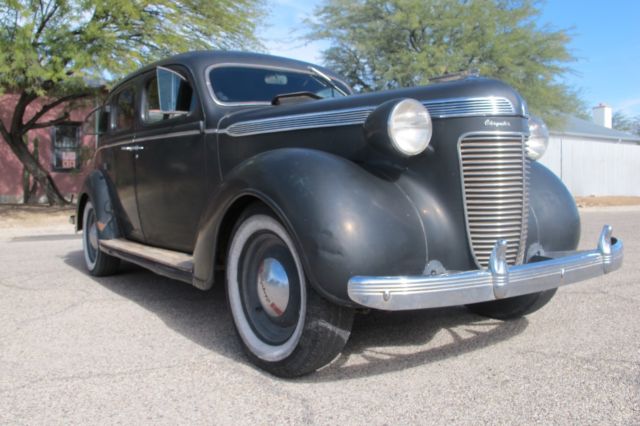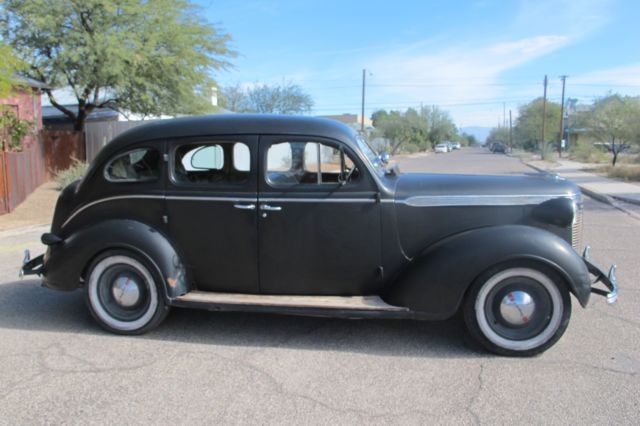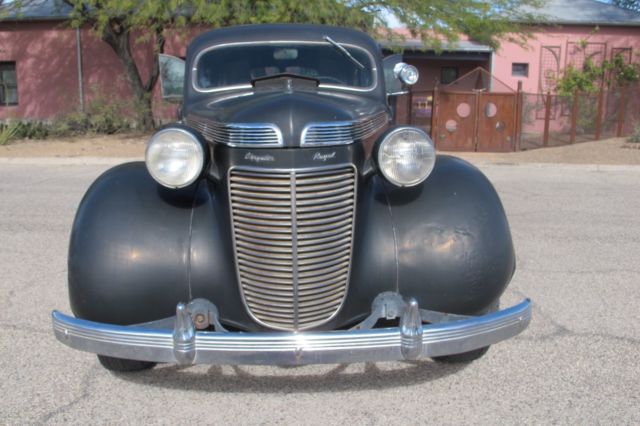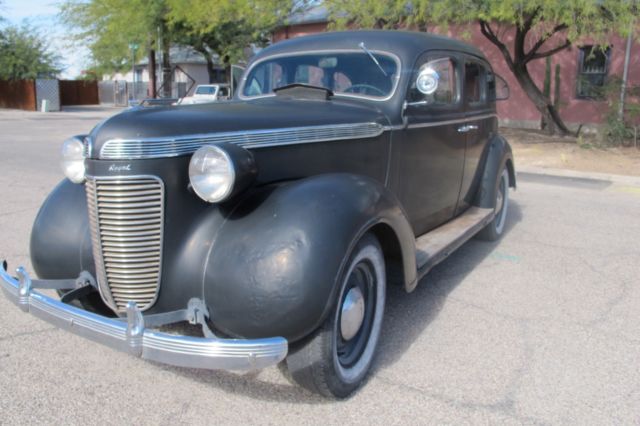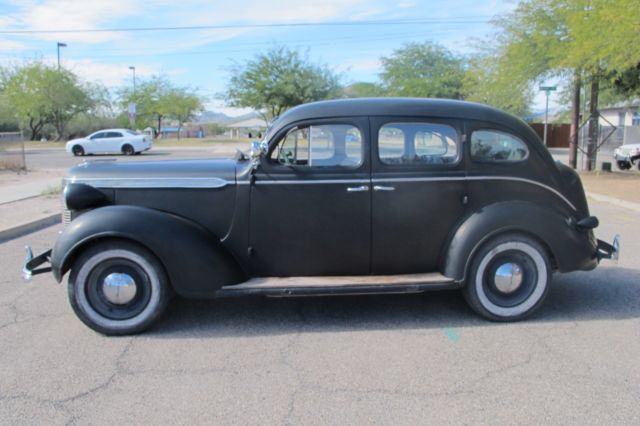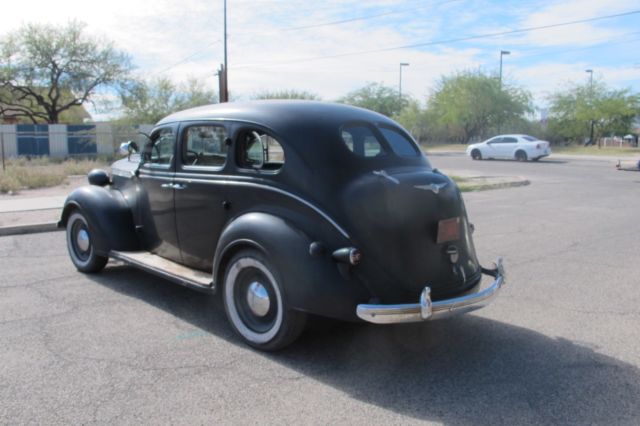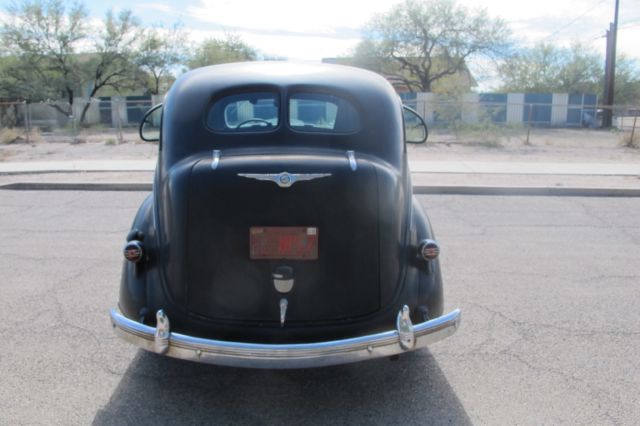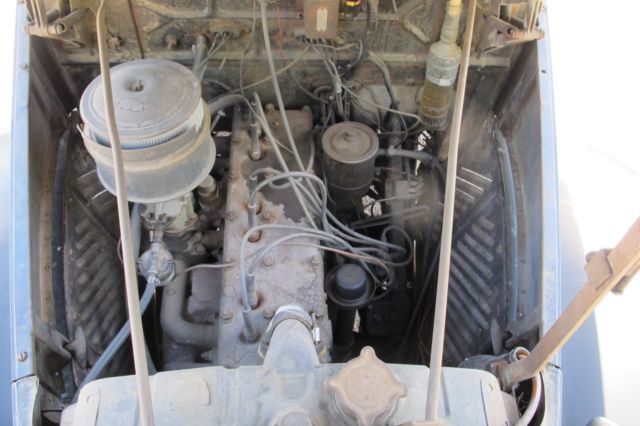1937 Chrysler Royal C16
- Condition: Used
- Make: Chrysler
- Model: Royal
- SubModel: C16
- Type: sedan
- Year: 1937
- Mileage: 123493
- VIN: 6886123
- Color: Black
- Engine size: 228 flathead 6
- Number of cylinders: 6
- Fuel: Gasoline
- Transmission: Manual
- Drive type: RWD
- Interior color: Gray
- Drive side: Left-hand drive
- Vehicle Title: Clear
- Location: Tucson, Arizona, United States
Description
This beautiful, much loved 1937 C-16 Chrysler Royal is up for sale. This vehicle is an amazing functional, time capsule. For the past nine years it has been a true “daily driver” as it has been driven at all times: day-time, night-time, city-driving, highway-driving, etc. The functional and mechanical aspects of the vehicle have been sorted out, as illustrated by the extensive list of details bellow. This vehicle does not represent an immaculate restoration, but instead it has the appropriate level of “wear and tear” for an 81-year-old unmolested original “survivor” that has been well used and loved for. Our family is growing and our needs are changing, and thus we are reluctantly selling “Walter” to the next loving owner and onto a new adventure.
If interested, please call 011 52 (622) 226-2144 (this is a landline in Mexico).
More pictures of the Chrysler can be seen at:
https://www.flickr.com/photos/132768534@N03/albums/72157674894211367
A video of the vehicle can be seen at:
https://www.youtube.com/watch?v=nQQQxZP4qBM
A video of the vehicle driving can be seen at:
https://www.youtube.com/watch?v=vgJNFt3zC9Y
Drive train:
·The original 228, straight flathead six that still has some (very little) of the original blue paint on the block. It runs beautifully and does not smoke, but it does consume about a quart of oil between oil changes (3000 miles).
·The original 3-speed transmission shifts through all of the gears flawlessly, and is a pleasure to drive.
·All oils (engine, transmission, and differential) have been properly maintained.
·The original differential has a 4:10 gear ratio that provides plenty of torque at low speeds and also allows one to do freeway speeds of 55mph with the flathead engine running at a reasonable 2800rpms.
·The pinion seal and both axel seals have been replaced on the differential.
·The driveshaft has new leather covers over the joints.
Ignition:
·New ignition coil with a new mounting bracket on the firewall. This is a more “modern” coil that has the two terminals on the top and is not connected to the key.
·New ignition key switch in the dash.
·New Pertronix electric ignition. It is not visible, unless you remove the distributor cap, and results in a more reliable spark as the “point gap” is always perfectly set. This can easily be removed if one wanted to go back to having points and condenser.
·New distributor cap.
·New rotor arm.
·New spark plugs.
·New plug wires.
Fuel:
·Rebuilt, and properly tuned, original Ball and Ball Carter carburetor. The “ball and socket” type linkages (which tend to “egg out” and pop off) have been replaced with new ones.
·New AC, glass bowl fuel filter.
·New “modern” paper element air filter that fits directly into the original housing. I found this to be more efficient and less restrictive than the original oil-soaked gauze.
·New 6V electric fuel pump mounted underneath by the fuel tank with an additional in-line fuel filter. This was done to eliminate vapor lock that was occasionally experienced during the 110’F summer days of Tucson. An additional benefit is that it made starting the vehicle easier if it has been sitting for a while and had empty fuel lines. You simply turn the ignition on and wait a short while for the fuel lines to fill up, and when the fuel reaches the glass bowl by the carburetor you can step on the starter. This is much better than having to crank the car many times to have the original mechanical fuel pump fill the fuel lines. The electric fuel pump is not visible (unless you crawled underneath the car) and you would never know it was there. The original fuel pump is still on the block, and one could easily revert back to the original system.
Electrical:
·All the original electrical components (headlights, tail lights, dash lights, interior light, gauges, horn, etc.) are functioning.
·New 6V redtop optima battery in the original positive ground configuration.
·The battery is charged by a 30amp, one wire, alternator that is wired through the original ammeter gauge in the dash. The alternator is very effective at maintaining the battery fully charged because it never drains the battery at an idle, such as the original generator does. The original generator is included and can easily be installed, although it would have to be rebuilt. The original voltage regulator is still on the firewall of the engine compartment.
·All of the original cloth wiring has been replaced with modern rubber coated wires. This was done with the correct color scheme as the original wiring.
·Original functional Philco radio, with the original control head installed in the dash. The original on-off switch in the control head was made out of cardboard that broke a long time ago, so the radio is now turned on and off with a toggle switch under the dash. The original block-out plate is included, if one wishes to remove the radio.
·Original antennas are located underneath the running boards, so the body was never drilled or modified for an antenna.
·The glove box contains a RediRad adapter that is spliced into the antenna. This allows one to plug in an ipod or phone and listen to it through the original radio! This of course is not visible outside of the glove box, and it can easily be removed if you find this to be too “modern”.
·The cigarette lighter sports a functional map light that also works as a cigarette lighter. The electrical terminals of the cigarette lighter in the dash have been reversed to negative ground. This does not affect the function of the map light, and it allows one to plug in a USB adapter to charge modern appliances such as phones.
·The silver-plating of the headlight reflectors is still in very good condition. The original incandescent light bulbs drew about 28amps, which was a significant strain on the charging system and only produced 28 lumens each, which made nighttime driving impossible. As a result, the original headlight bulbs have been replaced with LED lights that are wired through relays connected to a new light switch (with the original knob in the dash). The LED lights only draw 2 amps and produce 1800 lumens each! This modification is not visible (unless one opens the headlights) and it has made nighttime driving possible.
·The driver-side windshield wiper is currently operated by a new 6V electric motor meant for a Willy’s jeep. The motor works quite well, and at a constant speed, unlike the original vacuum motors that varied in speed depending on the vacuum of the engine.
·The original two-tone horn has a new relay and produces a nice “polite” sound.
Heating and Cooling:
·The large original honeycomb radiator works very well at keeping the car cool, and it has a glass quart sized bottle attached to retain the overflow of the radiator fluid. I found this to be better than the original set up that would have the poisonous radiator fluid pouring on the ground.
·New High flow, balanced sleeve 160’F thermostat maintains the temperature between 160’F and 180’F very effectively.
·A small, aftermarket oil cooler has been installed in front of the radiator and plumbed in line with the oil filter. It has helped maintain the temperature on the hottest (about 110’F) summer days in Tucson, especially when driving on the freeway in the middle of the day. The cooler can very easily be removed to retain the original configuration.
·Original heater is wired in and its front windshield vents are in place, but it is not currently plumbed in because the core sprung a leak.
Wheels and Brakes:
·All four wheels have new brake wheel cylinders, and all of the brakes have been properly adjusted.
·New brake master cylinder, with an antique bottle attached on the firewall of the engine compartment that serves as a brake fluid reservoir. This can easily be removed to retain the original configuration.
·New brake light switch.
·Original driveshaft brake works very well.
·The original independent front suspension provides a very smooth ride that is more reminiscent of a “modern” car from the 40’s or 50’s, rather than the 30’s.
·New shocks on all four wheels.
·New sway bar bushings.
·New drivers-side control arm, with the camber angle set properly.
·Four radial steel belted white wall tires that have been worn unevenly due to a bad drivers-side control arm. The control arms of this Chrysler are unique to 1937 and it took me a long time (nine years) to find a good drivers side control arm. While looking for another control arm, I simply rotated the tires. Now that the car has a new control arm (with a properly set camber) and nine year old tires that are unevenly worn, it is the perfect time for a new set of tires.
·All four original hubcaps.
Interior:
·The original mohair upholstery is currently covered with aftermarket seat covers. If it were not protected in this manner, it would completely disintegrate in a very short time.
·The original headliner has disintegrated a very long time ago, but all of the bows are still present and in place.
·The doors and kickboards have been lined with 1/8” hardwood panels.
·The dash is original, unmolested, and all of its components are fully functional.
·The original cardboard glove box has disintegrated and has been replaced by a more durable plastic one.
Body and Exterior:
·First year Chrysler offered an all-steel body. This includes the suicide doors, which do not sag at all and close like bank vaults.
·All original body that has never been taken apart, and is in remarkable shape for being 81 years old. Each of the fenders have their share of nick and dings, and the car is not completely rust free. The areas of rust include the following: the edges of the running boards where the support brackets meet, small holes along the bottom edge of the trunk, and the drivers side floorboards (that have been functionally “repaired” with a small sheet of metal). These areas have remained exactly the same and have not progressed during my nine years of ownership.
·First year Chrysler offered “safety” glass that does not break into big pieces. The window glass of the doors is original (with the original safety mark), while the rest of the glass has been replaced at some point. All of the glass is in excellent shape, although the rear passengers-side vent window has a small crack.
·The front windshield cranks outward, allowing an ample breeze to cool down the interior very effectively while driving. The original cranking mechanism is worn out, and therefore is held up with a nail when in use.
·New front windshield rubber, on both the edge of the windshield, and the inside frame.
·All original lenses are in very good shape.
·The original hood ornament is in great, and is used to unlatch the hood when opening it.
·All of the chrome is in very good shape.
Included:
·Reprint of the original repair manual.
·In the trunk one would find a period correct kerosene lantern, a complete antique picnic wicker basket, a functional spare tire, an antique car jack, and a tire iron.
·An assortment of spare parts.
·A stack of receipts documenting the vehicles maintenance and replacement of all the parts listed above.
Conclusion:
·This is a running, stopping, and driving, 81-year-old vehicle, and as such no guarantee or warranty is given or implied.
·This C-16 Chrysler Royal is being sold “as is”: a beautiful, well maintained, and unmolested survivor from 1937.
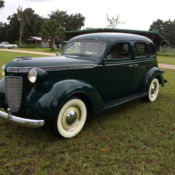 1937 Chrysler Royal C 16
1937 Chrysler Royal C 16
Mileage: 67,004
 1937 Chrysler Royal Sedan
1937 Chrysler Royal Sedan
Mileage: 66,000
 1937 Chrysler C16 Royal Sedan
1937 Chrysler C16 Royal Sedan
Mileage: 66,500
 Chrysler Royal 1937 Base
Chrysler Royal 1937 Base
Mileage: 999999
 1937 CHRYSLER ROYAL 6 RESTORED VERY NICE A MUST SEE
1937 CHRYSLER ROYAL 6 RESTORED VERY NICE A MUST SEE
Mileage: 70,000
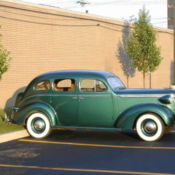 1937 CHRYSLER ROYAL C-16 SEDAN ORIGINAL & RUNNING
1937 CHRYSLER ROYAL C-16 SEDAN ORIGINAL & RUNNING
Mileage: 28,325
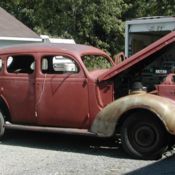 WINTER PROJECT OR PARTS CAR 1937 CHRYSLER ROYAL C-16 SEDAN
WINTER PROJECT OR PARTS CAR 1937 CHRYSLER ROYAL C-16 SEDAN
Mileage: 99,999
 1937 Chrysler Royal Six Town Sedan by Derham | Possibly the only one to exist!
1937 Chrysler Royal Six Town Sedan by Derham | Possibly the only one to exist!
Mileage: 79,575
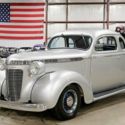 1937 Chrysler Royal 752 Miles Silver Coupe 327ci V8 Automatic
1937 Chrysler Royal 752 Miles Silver Coupe 327ci V8 Automatic
Mileage: 752
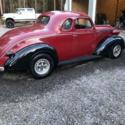 1937 Chrysler Royal PRICE IS FIRM / OFFER HAS TO BE $12,999 81047 Miles Burgundy
1937 Chrysler Royal PRICE IS FIRM / OFFER HAS TO BE $12,999 81047 Miles Burgundy
Mileage: 81047
